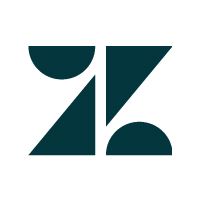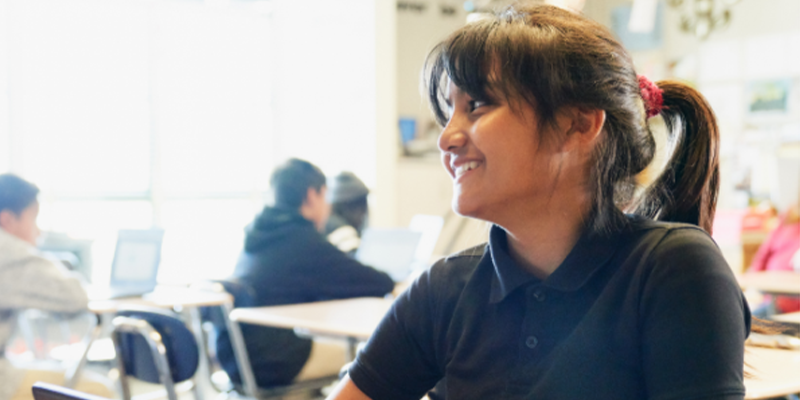
Zendesk
View Brand PublisherHow Khan Academy used Zendesk to help remote learners during a global pandemic
COVID-19 pandemic has elevated some organisations to unique positions for their abilities to bridge enormous gaps caused by widespread shutdowns. Khan Academy is one of them. The eponymous non-profit, created by Salman ‘Sal’ Khan in 2008, has long been known for its free educational offerings in math, science, and the humanities. Teachers and parents use Khan Academy’s free tools to track students’ progress.
When schools around the world shut down last year due to the COVID-19 pandemic, Khan Academy was uniquely well-suited for the moment, and traffic skyrocketed. Teachers needed help preparing remote-learning courses and schedules, while students required assistance in adjusting to online learning and video conferences. Parents, thrown suddenly into schooling at home, needed to help their children with schoolwork while also juggling childcare and jobs. But Khan Academy was ready – with advice, support, and nearly 100,000 topics in more than 40 languages, to effectively scale and handle a huge spike in traffic and support tickets. One of the factors critical to Khan Academy’s success is Zendesk.
An unprecedented spike in support requests
In March 2020, Khan Academy saw a 1,200 percent increase in the number of requests from parents and over a 750 percent increase in requests from teachers. Many new remote learners, parents, and teachers “didn’t understand how to get started with Khan Academy or get the most out of it ,” says Laurie LeDuc, Head of Community Support at Khan Academy, and the support team was close to being overwhelmed by the sudden surge in requests for help.,
The team was able to prioritise who needed immediate help, who should help them and whose problems could wait using an automated triage built into the Zendesk ticketing process. They used ticket forms as the sole gateway to support, which enables them to power through triage and automate a lot of flows.

During onboarding, visitors are asked to select a role (teacher, parent, administrator, student) along with details about the situation at hand, allowing the Khan Academy team to look at trends and build in rules that make it easy to prioritise routing and responses. Visitors who indicated they were new to Khan Academy during the surge in traffic were automatically prioritised. And for the thousands with non-urgent issues, Laurie's support team created macros to explain the situation, asking them to wait until they were able to help people with more urgent needs, and directing them to self-service resources and community pages that could help them in the meantime.
That kind of transparent triage has allowed Khan Academy to maintain a Customer Satisfaction (CSAT) score of 92 percent even as ticket response times more than doubled. “We’ve always had high-quality processes and have invested in making great macros that are deeply empathetic, friendly, and helpful, so we’re able to scale well while not sacrificing quality," says Laurie.
Handling record volume with automation, self-service, and community
Working with Khan Academy since the last four years and with Zendesk since 2009, building in rules and automating flows is nothing new for Laurie. “The areas where I get most creative are triggers, automations, ticket fields, ticket forms, views, and macros,” she says. “The ability to customise and set up complex rules to allow a truly seamless and well-organised user and agent experience is something I really value in Zendesk, as well as the ability to track and report on all of those aspects," she adds.
In addition to a content-rich help centre based on Zendesk Guide that’s regularly updated in English, Spanish, and Portuguese, Khan Academy boasts of an amazing community managed with a community forum with Gather. Laurie describes the Zendesk Gather community as “honestly the kindest, most helpful people on the internet”. She adds that they "really lean on them for help in general and especially for getting us through this intense period when our support team wasn’t able to quickly respond to everyone."
In fact, the ratio of community views to support tickets is 38:1, with each community contact logging an average of three responses—signalling a very engaged community. When school closures began, Khan Academy also hosted many of their school closure resources on Zendesk because of its flexibility. They were able to use the Light Agent feature to give teammates across the organisation access to quickly update help articles.

The support team itself is set up for efficient scaling. Laurie maintains a core team of community support associates in house, but the bulk of the work goes to an external division of highly-trained agents who are deeply integrated into Khan Academy’s teams. With school closures, that external team has grown from 8 to 15 agents. “We need to make sure we’re able to scale in an efficient way and found that contracting is a way to help do that," she says.
Meanwhile, internal community support team members are embedded in each Khan Academy product team, joining design discussions and planning the roadmap to make sure that the user's voice is actively represented in all development conversations. Their main goal in community support is to help people use the product in the way that they want - be it to answer a question, help them with their account or advocating for a product change or bugfix. "At the end of the day, our mission is to provide a free, world-class education for anyone, anywhere, so whenever we see an impediment to that, our team works to resolve it," says Laurie.
Using integrations to gain a grassroots view
With her years of working with Zendesk, Laurie has devised creative ways to take advantage of the product’s integration capabilities. A great way they've developed the Zendesk-to-Slack integration is to escalate community insights. At the end of the week, they ask everyone on the support team to fill out a report that lists their top observed pain points, with fields for additional trends or insights they may want to provide. They use an internal ticket form, as well as a dedicated macro to maintain a consistent format. "It’s an opportunity for agents to highlight whatever they think is really important – these reports often result in real, immediate product work,” she says. Once submitted in Zendesk (as a new ticket), the reports flow to Laurie via the Slack integration, enabling her to view them as part of her normal workflow and easily share them internally.
The ticket form also embeds tracking for components associated with each ticket. “I can immediately look up every end-of-week report that has mentioned something specific – for instance, the Assignments feature – and quickly pull tickets, trends, and feedback from my team, which I usually find more insightful than just searching through a backlog of tickets to look that information up,” she adds.
More traditionally, Khan Academy has an automated alert set up, so whenever support gets a predefined increase in tickets tagged as technical issues (based on custom ticket fields), an automated alert goes out to developers. All Zendesk tickets with the ‘technical issue’ tag get posted to their own Slack channel and developers can quickly check that channel to see what people have been writing about, see if anything is broken, and investigate it.
Khan Academy uses the Jira integration as well. Every time they verify a technical issue reported by someone, they attach it to an existing Jira issue or file a new one along with relevant information. With that, Khan Academy can quickly see what Jira issues are attracting the most attention without much manual work.
Laurie has also set up a Slack channel exclusively for positive CSAT feedback. “We get so many amazing testimonials from teachers, parents, learners and administrators who have had a positive interaction with our team. Honestly, sometimes it’s hard to believe how frequently we hear this incredible feedback. Everyday we get messages saying things like - I can’t even begin to tell you how you’ve helped me or changed my child’s life. It’s incredibly motivating, and I’ve never seen a support community like it," she says.











